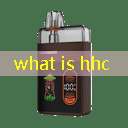Understanding the Rise of Vaping: A Comprehensive Guide
The world of smoking has seen significant changes in recent years, with vaping emerging as a popular alternative to traditional cigarettes. With its sleek devices and flavorful options, vaping has captured the attention of millions around the globe. But what exactly is vaping, and why has it become so prevalent? This article delves into the intriguing world of vape culture, exploring its benefits, health implications, and the reasons behind its growing popularity.
What is Vaping?
At its core, vaping involves the use of electronic devices to inhale vaporized liquid. Unlike traditional smoking, which burns tobacco, vaping uses a battery-powered device to heat a liquid (often containing nicotine, flavorings, and other chemicals) until it becomes vapor. This method allows users to enjoy a nicotine hit without many of the harmful byproducts associated with combustion.
The appeal of vaporizers extends to their versatility, as users can customize their experience by choosing different flavors and nicotine strengths. From fruity concoctions to classic tobacco flavors, the variety available in the vaping market caters to diverse preferences.
The Popularity Surge of Vaping
Several factors contribute to the increasing popularity of vaping among various demographics. One key reason is the perception of vaping as a safer alternative to smoking. Many believe that using e-cigarettes significantly reduces their risk of developing smoking-related diseases. This belief has made vaping especially attractive to former smokers looking for a less harmful way to satisfy their cravings.
Furthermore, social acceptance plays a crucial role in the vaping phenomenon. Vape lounges, social media influencers, and community gatherings celebrating vaping culture contribute to its visibility and normalization. For many, vaping serves not only as a smoking alternative but also as a social activity that fosters connections among enthusiasts.
The Health Implications of Vaping
As the popularity of vaping rises, health experts are actively studying its long-term effects. While vaping is generally considered less harmful than traditional smoking, it is not without its risks. Studies have shown that even though e-cigarettes contain fewer toxic substances than combustible tobacco, the inhalation of certain chemicals—such as formaldehyde and acrolein—can still pose health threats.
A prominent concern is the increasing prevalence of teen vaping, which has raised alarms among parents and educators. The experts caution against the addiction potential of nicotine, especially in younger users. The long-term health effects are still being researched, but the rise of vaping-related illnesses has highlighted the need for responsible usage and awareness.
Vaping vs. Traditional Smoking: A Comparative Analysis
1. Health Risks: Traditional cigarettes are well-known for their detrimental health effects, including lung cancer, heart disease, and respiratory issues. On the other hand, while vaping is perceived as safer, it does come with its own set of risks, particularly for young users and non-smokers.
2. Regulation and Availability: Vaping products are often subject to different regulations than traditional tobacco products. Laws on the sale and marketing of e-cigarettes vary widely by region, affecting accessibility and usage rates.
3. Cost Considerations: Vaping can be perceived as a more economical choice in the long run, as e-liquids and devices may ultimately cost less than a daily pack of cigarettes over time. This aspect can also draw former smokers toward vaping as a sustainable alternative.

The Future of Vaping Culture
As the vaping industry continues to evolve, innovation remains at its forefront. From advancements in device technology to the introduction of novel flavors, the market is expected to adapt to consumer preferences. Additionally, potential regulatory changes may shape the future of vaping, impacting how it is perceived and consumed.
Moreover, the dialogue surrounding vaping—ranging from its safety to its cultural implications—will likely continue to develop. Engaging with these discussions will be essential for users, policymakers, and medical professionals to navigate the complexities of vaping and its role in public health.
In conclusion, as we continue to explore the intriguing landscape of vaping, it’s clear that this phenomenon is reshaping the smoking experience in profound ways. With ongoing research, community engagement, and responsible practices, vaping remains a topic of interest that merits attention and understanding.







